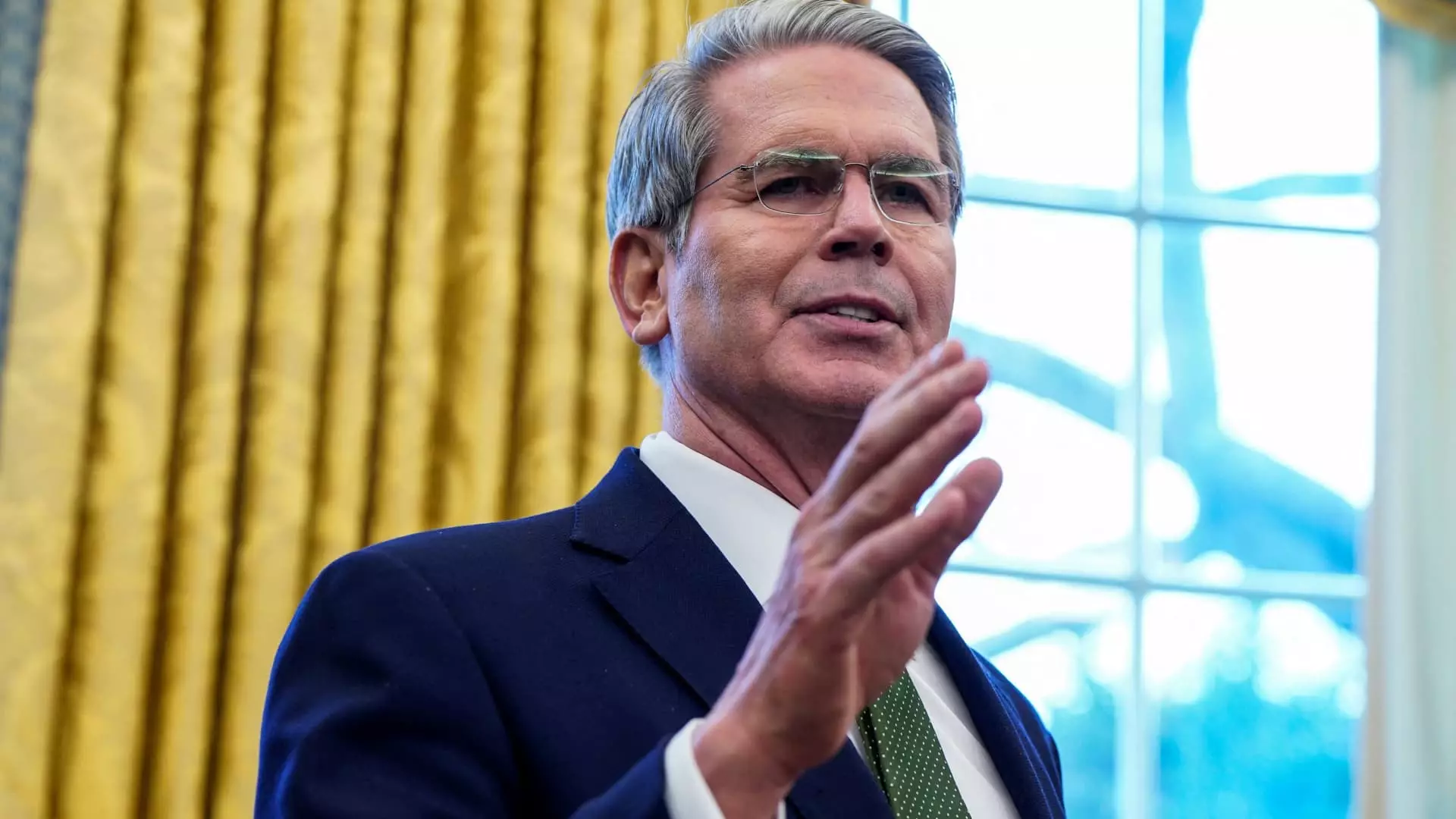The economic strategies under the Trump administration have evolved, particularly in regard to how Treasury yields are managed. Treasury Secretary Scott Bessent recently articulated a significant change in this approach, emphasizing a concerted effort to keep Treasury yields low through fiscal policy rather than relying heavily on the Federal Reserve’s monetary policies. This marks a departure from previous interactions, where President Trump openly pressured the Fed to cut interest rates, reflecting a broader economic philosophy that centers around deregulation and tax reform as primary levers for economic growth.
In a recent interview, Bessent underscored that the administration’s critical benchmark is now the 10-year Treasury yield, which serves as a vital indicator of long-term interest rates. Unlike the previous focus on the federal funds rate, a short-term benchmark largely influenced by the Fed, the Trump administration’s present strategy aligns Treasury dynamics with broader fiscal measures. Bessent clearly stated, “The president wants lower rates,” emphasizing that the administration’s goal is to maintain low borrowing costs to stimulate economic activity.
This broader approach acknowledges the limitations of monetary policy alone. Despite the Federal Reserve’s decision to engage in a rate-cutting cycle beginning in September 2024, which reduced the federal funds rate by a full percentage point, the resultant behavior of Treasury yields proved somewhat counterintuitive. After the cuts, Treasury yields increased, stirring concerns about inflation and market reactions.
The complexities within the financial markets are apparent, especially as the 10-year Treasury yield has been largely on a downward trajectory since Trump’s inauguration. As of the most recent trading session, yields hovered around 4.45%, down significantly from the mid-January peak of 4.8%. This decline has correlated with Trump’s broader economic policy narrative, which revolves around two main themes: deregulation and tax reform. Bessent highlighted that by fostering an environment of sustained economic growth through these mechanisms, it is expected that interest rates could adjust favorably without direct Fed intervention.
The administration’s focus on the 10-year yield rather than the federal funds rate illustrates a strategic pivot intended to foster stability within the equity markets and housing sectors. Analysts like Krishna Guha from Evercore ISI have noted the significant stakes associated with the 10-year yield, stating, “If it breaks 5 percent, we think Trumponomics breaks down.” This sentiment showcases the fragile equilibrium that the administration is trying to maintain amidst fluctuating market forces.
The Trump administration remains adamant about making the Tax Cuts and Jobs Act a permanent fixture of U.S. economic policy. The implications of this act, combined with a strong focus on energy exploration and continued deficit reduction, aim to create a more favorable economic environment. Bessent believes that reducing government size and increasing efficiency can lead to a healthier interest rate landscape. By tweaking fiscal policies rather than engaging in heavy-handed Federal Reserve advocacy, the administration seeks to position itself favorably for long-term economic growth that ideally results in manageable borrowing costs.
As the Trump administration navigates the complexities of fiscal governance and monetary policy, it faces the dual challenge of maintaining low Treasury yields while propelling growth through innovative fiscal measures. The pivot from a Fed-centric approach to a yield-focused strategy uncover the administration’s commitment to redefine its economic landscape. By prioritizing deregulation and fiscal adjustments, the administration hopes to foster a sustained economic recovery that allows for lower interest rates without relying just on the Federal Reserve’s tools. Ultimately, how successfully they can manage these factors will be critical in shaping the financial prospects for the years to come.


Leave a Reply